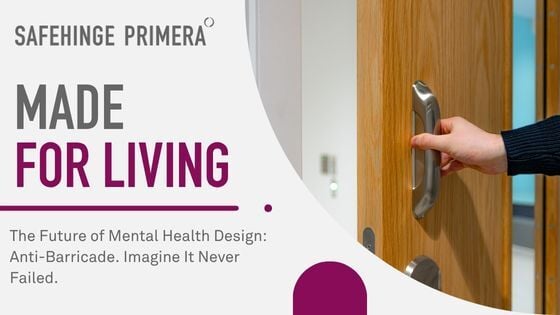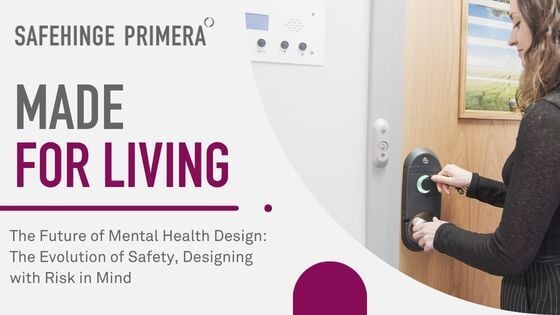It’s been a steep (and very enjoyable) learning curve to understand everything about our products in my first three months. One product that’s blown me away is our collapsible anti-barricade stop and I wanted to share some of my learning journey with you.
On the surface, it looks just like a normal door frame. In fact, just the other day one Estates Director complained that our door didn’t have an anti-barricade device and was blown away when he saw how simple and effective it was in operation.
Under the hood, our collapsible stop has crucial safety features that set it apart and make it a critical part of our anti-barricade
.jpg?width=1920&name=4484-Workshop-180%20(2).jpg)
Lifesaving detail 1:
The position of the pivot point enables it to release under pressure
The idea for the collapsible anti-barricade stop (Swiftstop) came from our involvement when the Health and Safety Executive were investigating alternatives following the original incident that led to the NHS Safety Alert about push-button stops, which can fail to operate if a service user pushes on the door from the inside. This is also a similar risk with hinged stops that require additional processes to be put in place (ie. apply pressure to the door, lock the door and then release the anti-barricade device).
We engineered our stop so that it always operates with internal pressure, and actually makes the door open easier. It’s this lifesaving detail that makes it the most reliable anti-barricade stop.
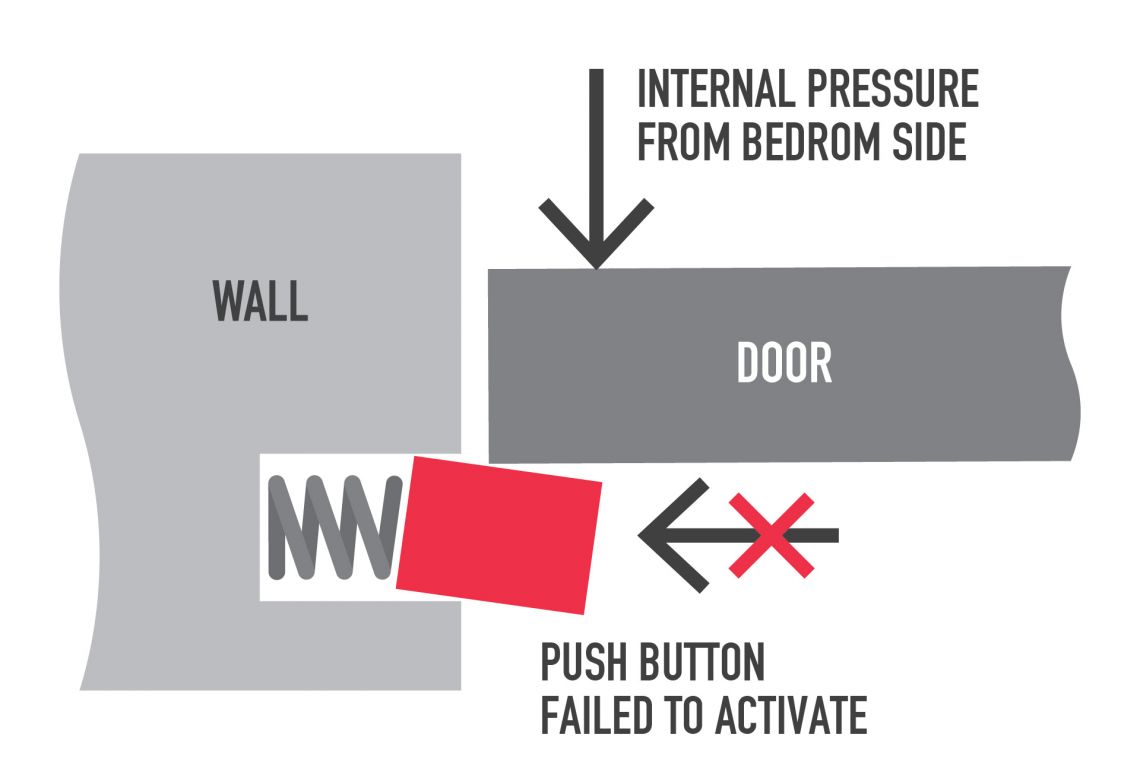
Push-button are vulnerable to internal pressure.
When a service user pushes on the door, it can prevent the stop activating.
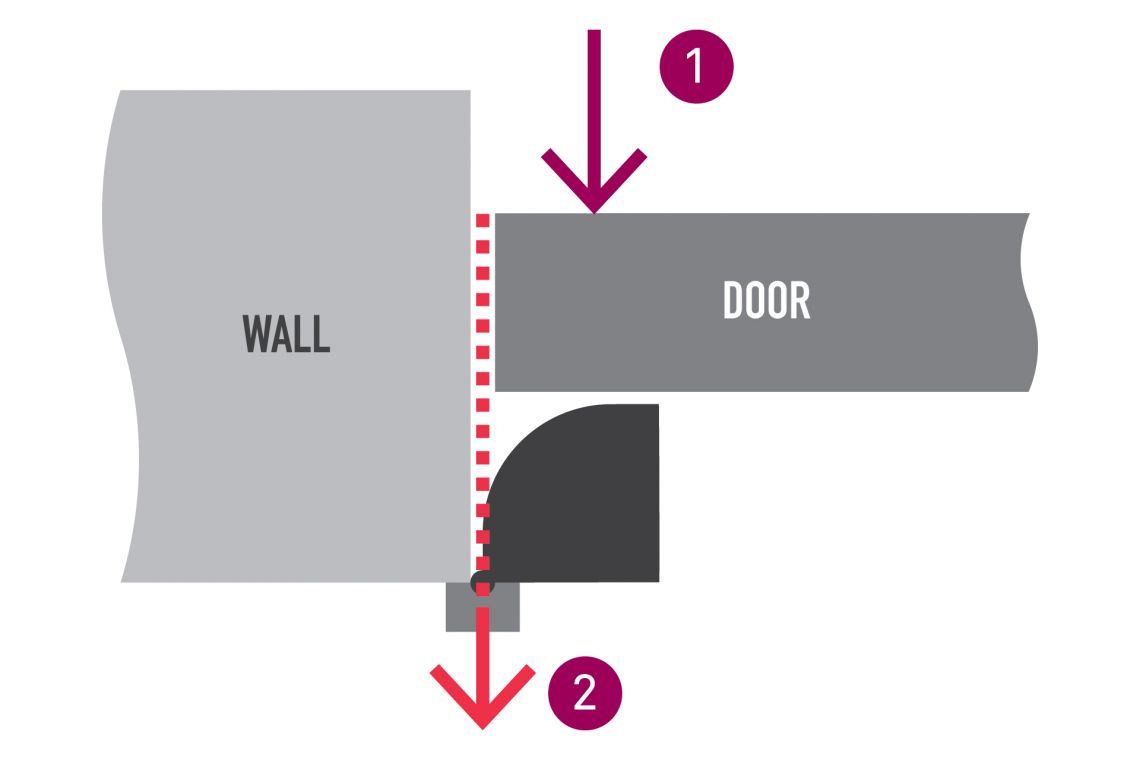
Hinged stops have the same limitation.
The internal force is pushing into the pivot point, and not around it – making it hard to activate the stop
Swiftstop addresses these limitations
The location of the pivot point means internal pressure actually helps the door
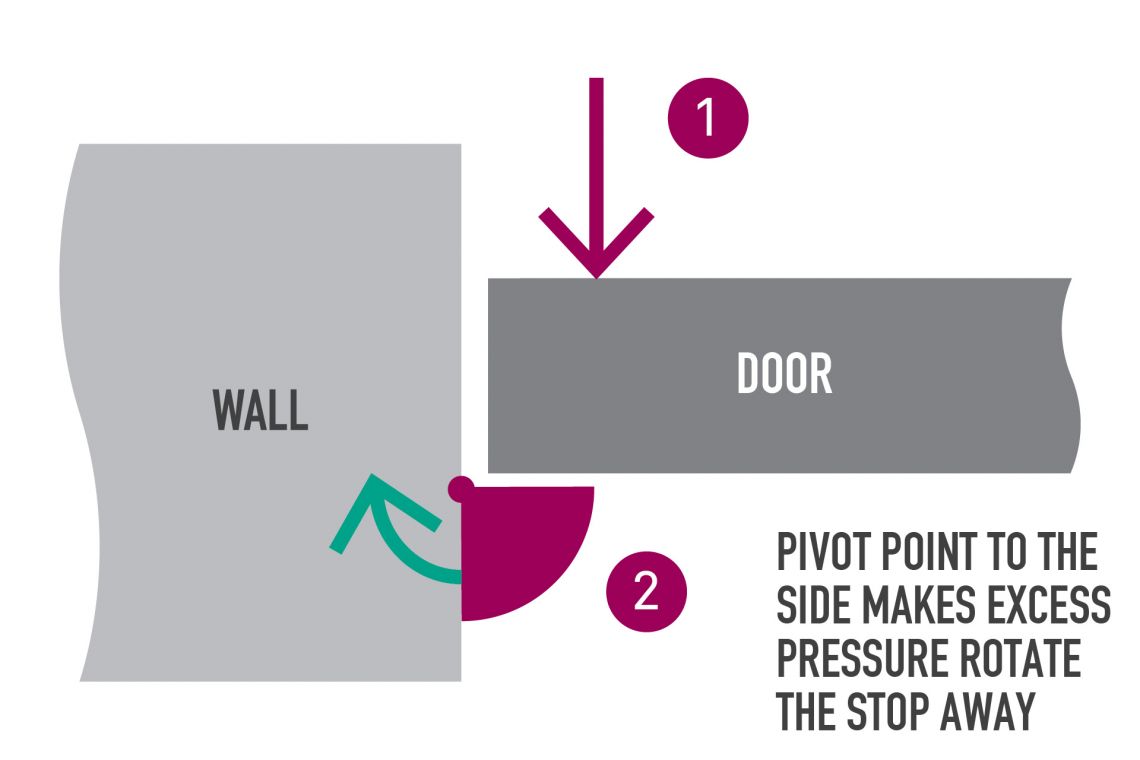
Lifesaving detail 2:
Staff are positioned to offer immediate assistance
In my conversations with clinical staff, I’ve been told that any anti-barricade stop that positions staff in front of the door is potentially dangerous – affecting their safety, and impacting the speed at which they can assess the situation and enter the room.
Our engineers carefully positioned the stop’s single release point to the side of the door – allowing staff to stand safety to the side of the outward-opening door. This means they have
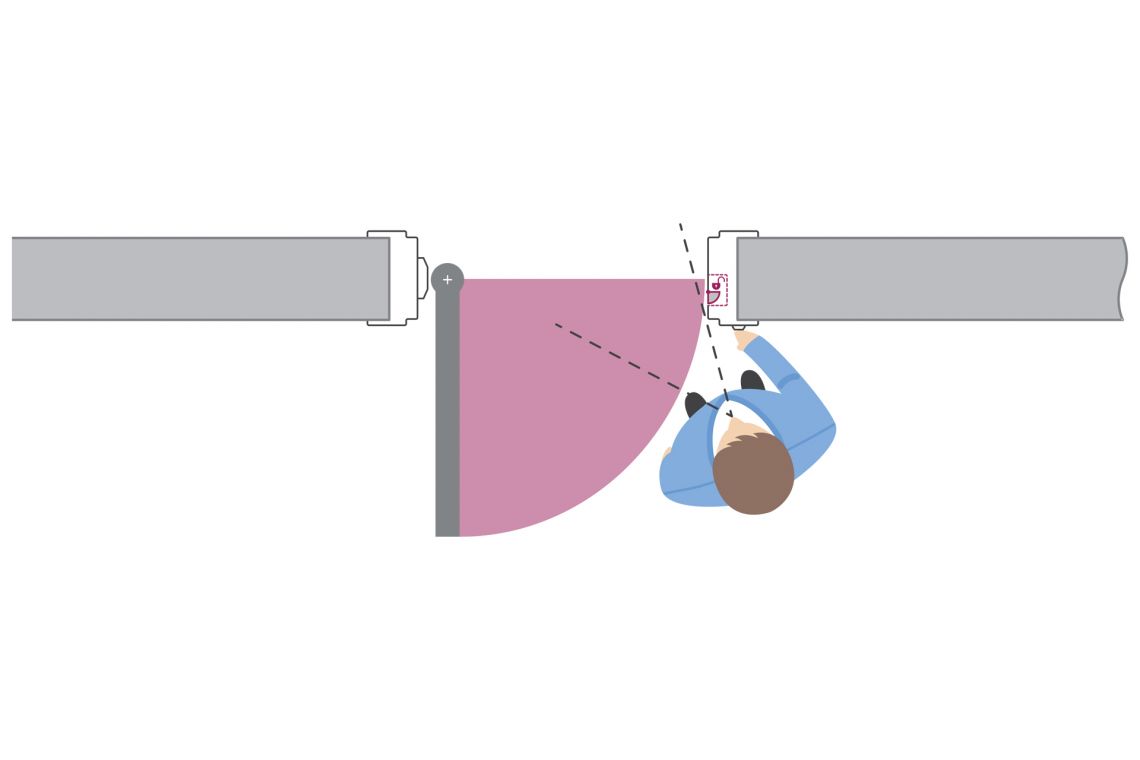
I’ve heard people talk about red and green zones – something I’d encourage clinical staff to carefully consider, to ensure they have established their own best practice based on experience. Anyone concerned about the risk of a hostile situation when the door is
The lifesaving detail of Swiftstop is that you can unlock the door – stood safely to the side – and with a clear view into the room –in under 2 seconds.
Lifesaving detail 3:
There’s an audible “clunk”
It’s a little thing (these lifesaving details sometimes are), but we engineered in an audible “clunk” so the clinician knows the anti-barricade stop has been released. In a stressful situation, this audible feedback is a simple notification that the stop is released successfully.
Lifesaving detail 4:
Separation of release and reset mechanisms
Other products have
Product Design Engineer, Jeremy Young, led the Swfitstop design and separated two mechanisms. The reset occurs after the incident has calmed down, so it’s not an emergency, the reset tool needs more leverage as it’s resetting the five-locking points on the stop. He also told me why our reset tool is curved: “If it’s accidentally left in the frame then it falls out – so as not to cause a hazard or be forgotten about.”
Our method means that in a stressful situation, there is only one way for the system to work. That’s what I love about Safehinge Primera – the engineers genuinely think everything through so our customers can focus on their priorities.
So I’ve only been here a few months but I love it and our products. We’ve invested a huge amount of engineering capacity to design these lifesaving details into our products, as well as making them look homely. Don’t take my word for it, get in touch with us and you can try these features yourself.


